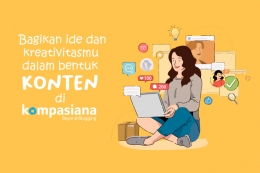In the era of globalization and rapid technological development, Higher Order Thinking Skills (HOTS) have become increasingly crucial in education, including language learning. HOTS-based learning encourages students not only to understand and memorize material but also to analyze, evaluate, and create new ideas. This aligns with 21st-century education goals that emphasize critical thinking, creativity, collaboration, and communication (4C) (Trilling & Fadel, 2009).
Concept of HOTS in Language Learning
HOTS refers to the higher cognitive levels in Bloom's Revised Taxonomy by Anderson & Krathwohl (2001), which include analyzing, evaluating, and creating. In the context of language learning, HOTS can be applied in various aspects such as reading, writing, speaking, and listening. For example, students analyze text structures or implicit meanings within discourse rather than just understanding the literal content (Brookhart, 2010). They also develop arguments in debates or assess the effectiveness of a text in delivering messages (Anderson & Krathwohl, 2001). Furthermore, students produce new texts, such as writing critical essays, short stories, or creating digital content (Kemendikbud RI, 2017). Through these processes, students are encouraged to be more independent in their learning, fostering a sense of curiosity and inquiry. They also enhance their ability to connect linguistic skills with real-world contexts, making language learning more meaningful and applicable. Additionally, integrating HOTS into language education helps students develop a deeper understanding of cultural and social aspects embedded in language use, ultimately shaping them into more reflective and engaged learners.
Benefits of HOTS in Language Learning
The application of HOTS in language learning provides several significant benefits. One of them is enhancing critical thinking skills, where students learn to evaluate information, compare different perspectives, and draw logical conclusions. This is highly beneficial in understanding literary texts, news articles, or academic papers (Brookhart, 2010). Another advantage is boosting creativity in language use, as students are encouraged to write and speak innovatively, such as in writing fiction or delivering creative presentations (Trilling & Fadel, 2009). Analytical thinking skills also play a crucial role in aiding problem-solving skills, helping students comprehend complex communication contexts, such as understanding implied meanings in conversations or advertisements (Anderson & Krathwohl, 2001). Moreover, HOTS prepares students for real-world challenges, as critical and creative thinking skills are highly valuable in professional and social life, making them more adaptable to academic and career demands (Trilling & Fadel, 2009). Additionally, by engaging in higher-order thinking, students develop the ability to approach language learning with a more inquisitive mindset, encouraging them to seek deeper insights rather than accepting information passively. This approach fosters lifelong learning habits, as students become more motivated to explore new ideas and perspectives. Ultimately, integrating HOTS into language education helps students become more independent, reflective, and effective communicators in diverse contexts.
Strategies for Implementing HOTS in Language Learning
To effectively apply HOTS in language learning, teachers can adopt several instructional strategies that encourage students to think critically and creatively. One effective approach is problem-based learning, where students are given problems or cases to solve through discussion, research, and critical analysis (Brookhart, 2010). This method allows students to engage in real-world problem-solving, enhancing their ability to analyze and synthesize information. Another strategy is the use of open-ended questions, where teachers pose questions with no single correct answer to encourage deeper thinking and discussion (Anderson & Krathwohl, 2001). This fosters an environment where students must justify their reasoning and consider multiple perspectives. Additionally, integrating technology into language learning---such as using digital media like podcasts, blogs, and online discussions---enables students to develop critical and creative thinking skills while engaging with authentic and interactive content (Kemendikbud RI, 2017). Collaborative activities, such as group discussions and projects, also play a crucial role in enhancing HOTS by allowing students to explore ideas, engage in constructive debates, and develop innovative solutions together (Trilling & Fadel, 2009). These strategies not only make learning more dynamic and interactive but also prepare students to apply their language skills in diverse and meaningful contexts.
Thus, the implementation of HOTS in language learning is not merely a trend but a necessity in shaping a generation of critical and creative thinkers. With HOTS, students not only master language technically but also develop deeper thinking, effective communication, and innovative creation. Therefore, educators and institutions should actively integrate HOTS strategies into curricula and teaching methods to prepare students for future challenges.
References
Anderson, L. W., & Krathwohl, D. R. (2001). A Taxonomy for Learning, Teaching, and Assessing: A Revision of Bloom's Taxonomy of Educational Objectives. Longman.
Brookhart, S. M. (2010). How to Assess Higher-Order Thinking Skills in Your Classroom. ASCD.








